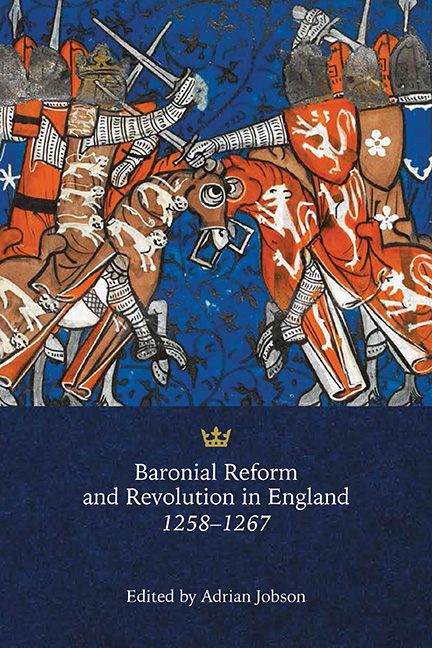33 results
4 - England in the Fourteenth Century
-
-
- Book:
- The Cambridge Constitutional History of the United Kingdom
- Published online:
- 12 August 2023
- Print publication:
- 17 August 2023, pp 84-107
-
- Chapter
- Export citation
Spatial and Temporal Limits of the Casas Grandes Tradition: A View from the Fronteras Valley
-
- Journal:
- Latin American Antiquity / Volume 34 / Issue 2 / June 2023
- Published online by Cambridge University Press:
- 25 November 2022, pp. 235-258
- Print publication:
- June 2023
-
- Article
-
- You have access
- Open access
- HTML
- Export citation
Chapter 7 - Land and Landscape in Irish Poetry in English, 1700–1780
- from Part III - Local, National, and Transnational Contexts
-
-
- Book:
- Irish Literature in Transition, 1700–1780
- Published online:
- 28 February 2020
- Print publication:
- 12 March 2020, pp 151-170
-
- Chapter
- Export citation
Chapter 3 - Working-Class Writing in Ireland before 1800
-
-
- Book:
- A History of Irish Working-Class Writing
- Published online:
- 10 November 2017
- Print publication:
- 16 November 2017, pp 72-88
-
- Chapter
- Export citation
Index
-
- Book:
- Baronial Reform and Revolution in England, 1258-1267
- Published by:
- Boydell & Brewer
- Published online:
- 21 May 2021
- Print publication:
- 21 October 2016, pp 259-284
-
- Chapter
- Export citation
Dedication
-
- Book:
- Baronial Reform and Revolution in England, 1258-1267
- Published by:
- Boydell & Brewer
- Published online:
- 21 May 2021
- Print publication:
- 21 October 2016, pp v-vi
-
- Chapter
- Export citation
Contents
-
- Book:
- Baronial Reform and Revolution in England, 1258-1267
- Published by:
- Boydell & Brewer
- Published online:
- 21 May 2021
- Print publication:
- 21 October 2016, pp vii-viii
-
- Chapter
- Export citation
Acknowledgements
-
- Book:
- Baronial Reform and Revolution in England, 1258-1267
- Published by:
- Boydell & Brewer
- Published online:
- 21 May 2021
- Print publication:
- 21 October 2016, pp x-x
-
- Chapter
- Export citation
List of Illustrations
-
- Book:
- Baronial Reform and Revolution in England, 1258-1267
- Published by:
- Boydell & Brewer
- Published online:
- 21 May 2021
- Print publication:
- 21 October 2016, pp ix-ix
-
- Chapter
- Export citation
List of Abbreviations
-
- Book:
- Baronial Reform and Revolution in England, 1258-1267
- Published by:
- Boydell & Brewer
- Published online:
- 21 May 2021
- Print publication:
- 21 October 2016, pp xi-xiv
-
- Chapter
- Export citation
Frontmatter
-
- Book:
- Baronial Reform and Revolution in England, 1258-1267
- Published by:
- Boydell & Brewer
- Published online:
- 21 May 2021
- Print publication:
- 21 October 2016, pp i-iv
-
- Chapter
- Export citation

Baronial Reform and Revolution in England, 1258-1267
-
- Published by:
- Boydell & Brewer
- Published online:
- 21 May 2021
- Print publication:
- 21 October 2016
Cost and Effectiveness of Combination Nicotine Replacement Therapy Among Heavy Smokers Contacting a Quitline–CORRIGENDUM
-
- Journal:
- Journal of Smoking Cessation / Volume 11 / Issue 1 / March 2016
- Published online by Cambridge University Press:
- 03 February 2015, p. 60
- Print publication:
- March 2016
-
- Article
-
- You have access
- HTML
- Export citation
8 - Virile Vernaculars: Radical Sexuality as Social Subversion in Irish Chapbook Verse, 1780–1820
-
-
- Book:
- United Islands?
- Published by:
- Pickering & Chatto
- Published online:
- 05 December 2014, pp 141-152
-
- Chapter
- Export citation
Cost and Effectiveness of Combination Nicotine Replacement Therapy Among Heavy Smokers Contacting a Quitline
-
- Journal:
- Journal of Smoking Cessation / Volume 11 / Issue 1 / March 2016
- Published online by Cambridge University Press:
- 30 June 2014, pp. 50-59
- Print publication:
- March 2016
-
- Article
- Export citation
TW Hydrae: multi-wavelength interferometry of a transition disk
-
- Journal:
- Proceedings of the International Astronomical Union / Volume 8 / Issue S299 / June 2013
- Published online by Cambridge University Press:
- 06 January 2014, pp. 104-108
- Print publication:
- June 2013
-
- Article
-
- You have access
- Export citation
Marsh’s Library, a mirror on the world: law, learning and libraries, 1650–1750. Edited by Muriel McCarthy and Ann Simmons. Pp 312, illus. Dublin: Four Courts Press. 2009. €55.
-
- Journal:
- Irish Historical Studies / Volume 37 / Issue 145 / May 2010
- Published online by Cambridge University Press:
- 04 February 2015, pp. 132-133
- Print publication:
- May 2010
-
- Article
- Export citation
Exploring the feasibility of a meta-structure for DSM-V and ICD-11: could it improve utility and validity?: Paper 1 of 7 of the thematic section: ‘A proposal for a meta-structure for DSM-V and ICD-11’
-
- Journal:
- Psychological Medicine / Volume 39 / Issue 12 / December 2009
- Published online by Cambridge University Press:
- 01 October 2009, pp. 1993-2000
-
- Article
- Export citation
A brief note about likelihood ratios
-
- Journal:
- Canadian Journal of Emergency Medicine / Volume 10 / Issue 5 / September 2008
- Published online by Cambridge University Press:
- 21 May 2015, pp. 441-442
- Print publication:
- September 2008
-
- Article
-
- You have access
- Export citation
Incorporation bias in studies of diagnostic tests: how to avoid being biased about bias
-
- Journal:
- Canadian Journal of Emergency Medicine / Volume 10 / Issue 2 / March 2008
- Published online by Cambridge University Press:
- 21 May 2015, pp. 174-175
- Print publication:
- March 2008
-
- Article
-
- You have access
- Export citation



